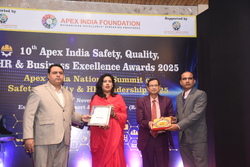CGHS Turning Into Nightmare For Pensioners: Time For Total Overhaul : C. Srikumar, General Secretary, AIDEF
A major concern highlighted is the refusal of treatment by many CGHS-empanelled private hospitals

The Central Government Health Scheme (CGHS), originally envisioned as a lifeline for Central Government employees, pensioners, Members of Parliament, and judges, is now being seen as a major source of hardship—particularly for elderly pensioners. Once a promise of accessible, cashless healthcare, CGHS has now become a bureaucratic maze, riddled with delays, denial of treatment, and mounting frustrations.
In an exclusive interaction with www.indianpsu.com, C. Srikumar, General Secretary of All India Defence Employees Federation (AIDEF) and Member of the Standing Committee of the National Council (JCM), shared his deep concerns over the worsening situation of CGHS services and the growing unrest among pensioners.
“CGHS is slowly turning into a nightmare. Pensioners are being forced to run from pillar to post for basic medical care, despite having contributed significantly to the scheme during their service,” said Srikumar.
Pensioners in Non-CGHS Areas Left Out in the Cold
Retired employees living in areas outside the 80 officially recognized CGHS cities receive only a meager Fixed Medical Allowance (FMA) of Rs. 1,000 per month. With no access to CGHS Wellness Centers or empanelled hospitals, many elderly pensioners are left to fend for themselves.
“Many retirees return to their hometowns after retirement. These Tier-II and Tier-III cities lack CGHS centers, and these pensioners are completely cut off from medical support,” added Srikumar.
Overburdened Wellness Centers, Poor Staff Ratio
Even in cities where CGHS centers exist, the situation is grim. Each doctor is reportedly handling 150–200 patients per day, leading to rushed consultations, diagnostic errors, and excessive referrals.
“There is a severe shortage of doctors, nursing staff, and even clerical workers. Minor ailments that should be treated in-house are being referred to empanelled private hospitals, which then exploit the system for profit,” said Srikumar.
Empanelled Hospitals Exploiting Pensioners
A major concern highlighted is the refusal of treatment by many CGHS-empanelled private hospitals. These hospitals claim the CGHS treatment rates are unviable and that government reimbursements take months.
Hospitals often emotionally pressure families to pay out-of-pocket for “better” procedures or branded medicines—costs that CGHS does not reimburse. This leaves pensioners with no option but to dip into their limited pensions or savings.
Technological Changes Adding to Pensioners’ Burden
The recent migration of CGHS software from NIC to CDAC has added a new layer of confusion, particularly for senior citizens. The system is reportedly not user-friendly, and in many cases, branded medicines prescribed by specialists are being auto-substituted without informing the patient or consulting the doctor.
“This is not just inefficient—it’s dangerous. It compromises the health and safety of elderly patients,” warned Srikumar.
- Government Inaction Despite Repeated Representations
- The Parliamentary Standing Committee had earlier recommended:
- Setting up CGHS Wellness Centers in all district headquarters,
- Revising treatment rates for private hospitals,
- Recognizing ECHS hospitals for CGHS,
- Ensuring sufficient staffing.
However, none of these recommendations have been implemented, said the senior trade union leader.
A Call for Urgent Revamp
Srikumar emphasized the urgent need for:
- 100% cashless treatment,
- Availability of branded medicines,
- Senior-friendly software systems,
- Expansion of CGHS to all districts,
- Strict monitoring of empanelled private hospitals.
“We, the Staff Side of National Council (JCM), will continue to fight. The government must act now to protect the dignity and health rights of those who have served the nation,” concluded Srikumar.
Conclusion
The CGHS system is clearly in dire need of reform. With a growing population of pensioners and increased healthcare needs, the current structure is unable to deliver on its promises. Unless decisive action is taken, the scheme risks further alienating the very people it was designed to serve.




